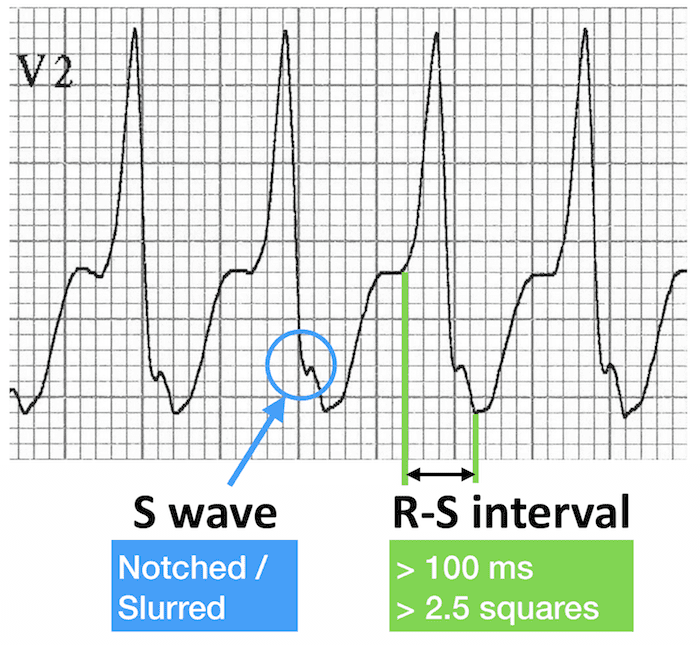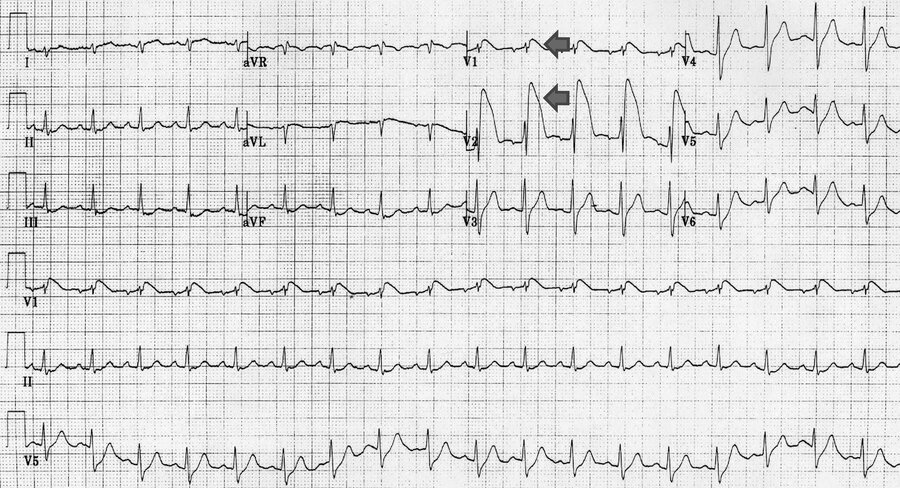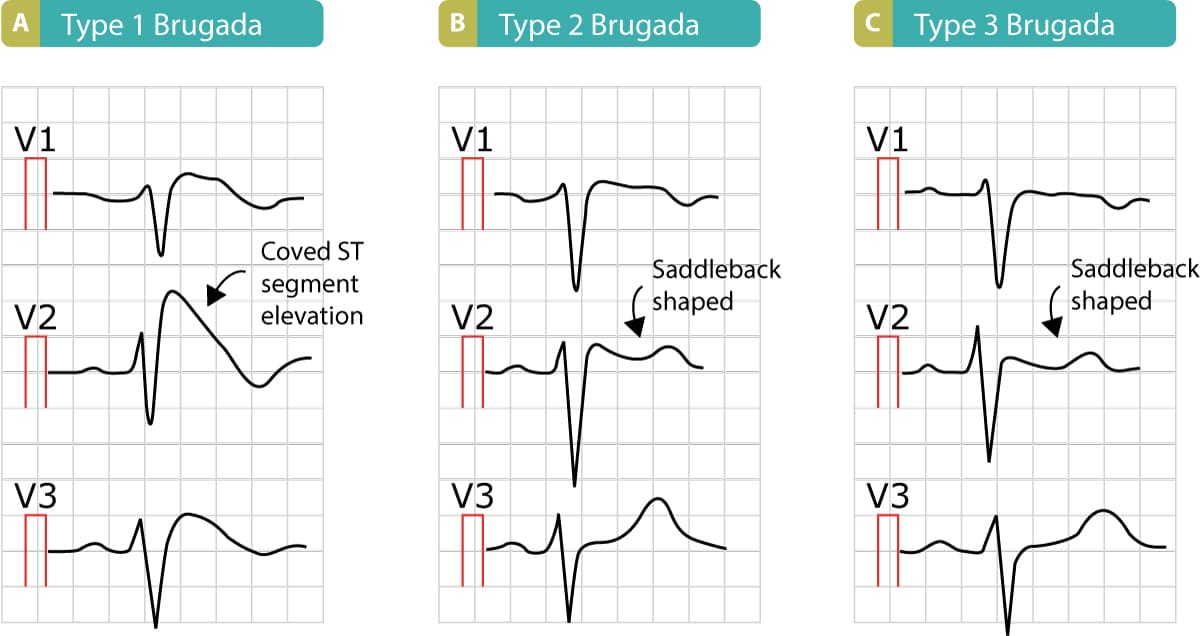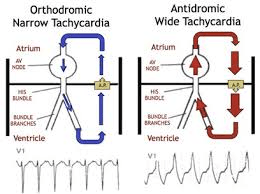In a wide complex tachycardia, the finding of fusion beats or capture beats provides strong evidence for this rhythm.
What is ventricular tachycardia?
In a patient presenting with suspected myasthenic crisis, this bedside pulmonary function test is the most critical to monitor for impending respiratory failure.
What is the negative inspiratory force (NIF)? (Accept vital capacity)
This treatment for TLS will result in hemolysis in patients with G6PD deficiency.
What is rasburicase?
This ECG finding, characterized by a short PR interval, a slurred upstroke, and wide QRS complexes, predisposes patients to re-entrant tachycardias and sudden cardiac death.
What is Wolff-Parkinson-White (WPW) syndrome?
These are 2 of the 3 most common pathogens in bacterial rhinosinusitis.
S.pneumoniae, H.influenzae, and M.catarrhalis
This history alone significantly increases the pre-test probability of ventricular tachycardia.
A patient with a history of prior myocardial infarction presents with a wide complex tachycardia.
Without a history of MI, the pretest probability of WCT being VT is over 80%. With history of MI, the pretest probability of VT increases to 90-98%.
In the setting of Guillain-Barre syndrome, this is the relative efficacy of plasmapharesis vs IVIG.
What is equivalent in overall efficacy and relapse rates?
Plasmapharesis may be slightly faster, but IVIG is often preferred due to lower burden of administion and trend toward lower complication rates.
This is the treatment and name for the specific type of acute leukemia is notorious for presenting with DIC and can lead to life-threatening bleeding and thrombosis if not rapidly treated.
What is all-trans retinoic acid (ATRA) for the treatment of Acute Promyelocytic Leukemia (APL)?
Association with t(15;17) resulting in fusion of PML-RARA which is sensitive to ATRA. Post-treatment concern for differentiation syndrome (fever, resp distress, fluid retention, systemic inflammation, organ damage)
In a patient presenting with syncope, this ECG finding, consisting of a coved ST-segment elevation in leads V1-V3, is a hallmark of a genetic channelopathy associated with sudden cardiac death.
What is Brugada syndrome?
This highly specific imaging modality is considered the gold standard for diagnosing chronic rhinosinusitis (CRS) and delineating osteomeatal complex obstruction
CT of the paranasal sinuses
R to S interval greater than this duration in 1 precordial lead provides strong evidence for VT. (take off of the R wave to the nadir of the S)
R to S interval > 100ms in 1 precordial lead
This criterion, also known as the Brugada sign, is considered highly specific for VT.
One study of 554 pts yielded specificity of 98% and sensitivity of 66%. (Brugada listed 100% specific)
In the setting of ischemic stroke, these are BP targets with tPA and without tPA administration.
BP with tPA < 180 / < 105
BP without tPA < 220/ < 120
These are 4 serum abnormalities observed in tumor lysis Syndrome.
Hyperkalemia
Hyperuricemia
Hyperphosphatemia
Hypocalcemia

Incomplete RBBB pattern and elevation of the ST segments that gradually descends to an inverted T wave in leads V1 and V2 are characteristic of the classic variety of Brugada pattern.

Though the vast majority (> 90% according to most sources) of cases of rhinosinusitis are not bacterial, these are 3 findings that may justify/indicate treatment with antibiotics.
T > 102.2F (39C)
symptoms > 10 days
severe symptoms x 3-4 days
worsening symptoms after initial improvement
This is the BB with demonstrated superiority for management of refractory VT and dose.
Appropriate medication for a patient with whole body convulsions that started 20 minutes ago, stopped after 3 minutes, but resumed without the patient returning to baseline. He received midazolam 10mg IM on arrival to the ED.
Fosphenytoin 20mg PE/kg, valproate 20mg/kg, or levetiracetam 60mg/kg
CSE defined as GTCS lasting more than 5 minutes or two such episodes within 5 minutes without return to baseline in between.
This is the pentad of Thrombotic Thrombocytopenic Purpura.
Fever
Renal Dysfunction
(microangiopathic) Hemolytic Anemia
Thrombocytopenia
Neurologic Symptoms
This WPW with antidromic AVRT

QRS complexes are not very broad, the axis is to the right, and there is no concordance of the QRS complexes
Animal models suggest this anion exchange protein is largely responsible for alkalosis associated with diuretic therapy.
Pendrin (Cl-/bicarb) encoded by SLC26A4 gene in humans
Found in intercalated cells of collecting duct, cochlea, thyroid, and respiratory epithelium
These are three inherited conditions that predispose an individual to VT in a structurally normal heart.
CPVT - catecholaminergic polymorphic ventricular tachycardia (RYR2 gene and CASQ2 gene)
LQTS - long QT syndrome (KCNQ1, KCNH2, and SCN5A)
BrS - Brugada Syndrome (SCN5A gene encodes Na channle subunit)
ARVC, DCM and HCM are not structurally normal.
This variant of GBS characterized by ophthalmoplegia, ataxia, and areflexia can lead to respiratory failure within hours.
Miller-Fisher Syndrome or Miller-Fisher variant Guillain-Barré Syndrome
The initial 2 steps in management and evaluation of pt with metastatic cancer (most commonly prostate, lung, breast or myeloma and lymphoma) with back pain, LE weakness, urinary retention, saddle paresthesia, hyperreflexia.
When ESCC is suspected [weakness, sensory loss, and bowel or bladder dysfunction (retention or incontinence)], high-dose intravenous dexamethasone should be started immediately, followed by urgent MRI of the cervical, thoracic, and lumbar spines.
If Torsades de Pointes is recurrent and refractory to magnesium, this temporary measure can be employed to shorten the QT interval and suppress the arrhythmia.
What is overdrive pacing (or isoproterenol infusion)?
Dx for persistent nasal congestion that is not relieved despite prolonged (> 2 weeks) use of oxymetazoline
Rhinitis medacamentosa
- use of vasoconstrictors (oxymetazoline, phenylephrine) for > 3 days tends to induce dependence and rebound congestion
